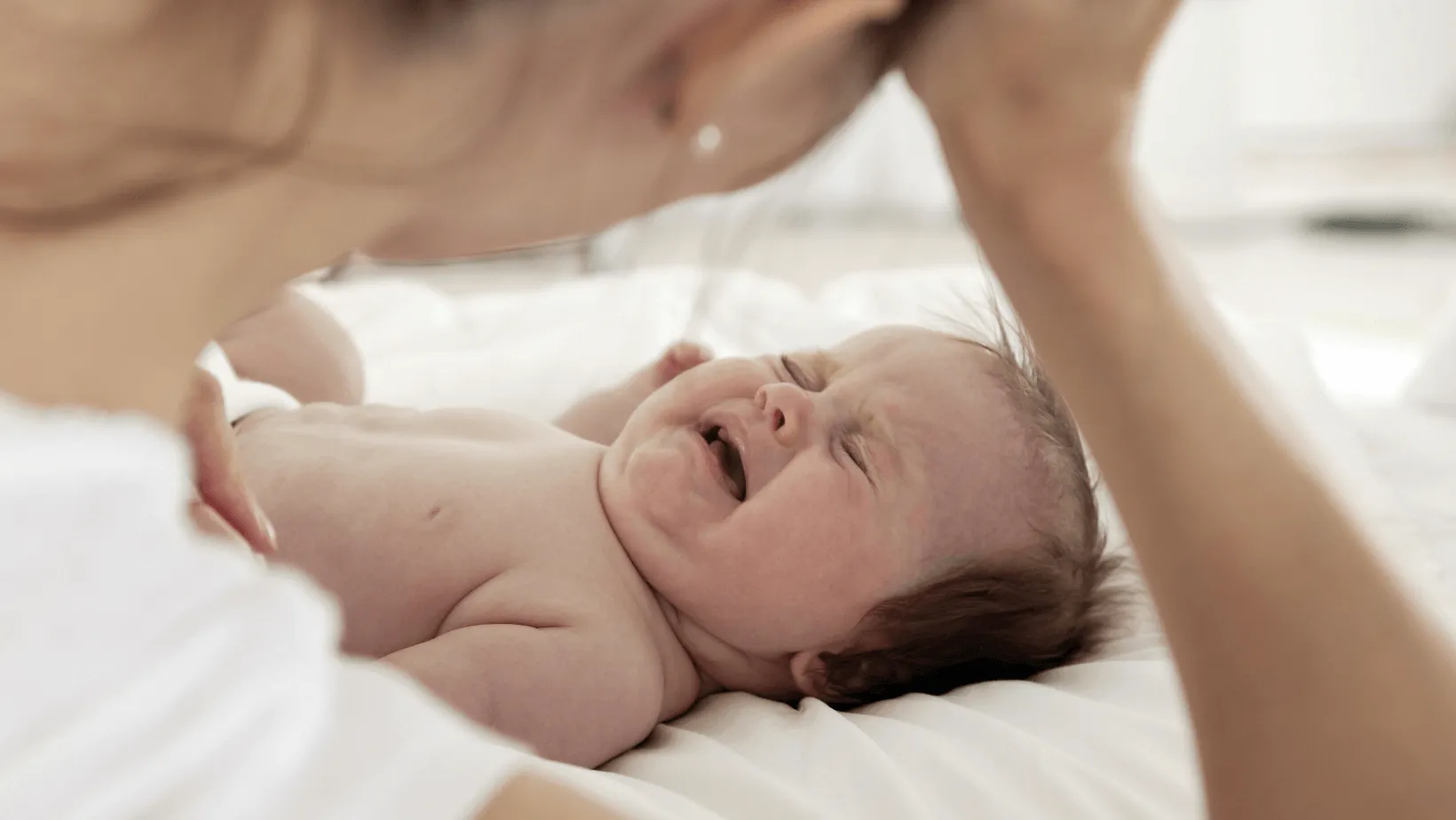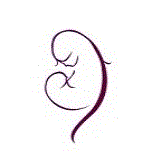Refusing One Breast - Breast Preference
Most women notice a difference between their two breasts when it comes to the flow of milk, the volume expressed, and the size between them. This is normal.

One-sided Breastfeeding

Is your baby refusing one breast suddenly?
No two sides of a person's body are the same. Most times, the difference in breast size is not noticeable to others.
It is perfectly okay to continue to let your baby feed from only one side while you pump the other or even let it dry up; this is a personal decision.
Is Breast Preference Normal?
Breast preference is a common breastfeeding problem. Usually, a baby will start to pull away or fuss at one breast.

Will Baby Be Getting in Enough Milk?
Unless you have low milk supply issues, your baby will receive all they need from just one breast if you breastfeed on demand. Triplets only have two breasts to share, and many mothers have successfully breastfed multiples.
The more your baby drinks from one side, the more that breast will produce, so yes, it is possible to breastfeed from one breast alone. Most mothers avoid this, though, because it might cause them to look a little lopsided until they wean.
So what Causes One-Sided Nursing Preference?
Why do babies prefer one breast over another?
- Breast engorgement on one side may cause single-side breastfeeding. The stiffness of the breast may cause latching difficulty.
- Differences in the nipple (one is maybe easier to latch onto) A mole or even hair can bother a baby.
- Flow differences between the two breasts; your baby might prefer the one breast with a more relaxed or faster milk flow.
- Forgetting to switch from one breast to the next will cause a low milk supply in the neglected breast.
- If you have mastitis in one breast, your baby might not want to drink from it due to the taste difference. Plugged ducts, stasis, and mastitis will increase the sodium levels in your milk and make the milk taste bad. Breast massage is a great way to reduce the salt content in your breast milk.
- Breast milk may taste different (usually saltier) in one breast if it has a lower supply. To remedy this, you can increase your milk supply on that side by pumping.
- One breast might have a darker color breast milk. This is usually due to a broken capillary and might cause a different taste. After your breast has healed, your baby should start drinking from it again.
- Maybe your baby won't latch because they are more comfortable on the other side. Most babies show a side preference and will nurse more efficiently from that side. A mother may also unintentionally nurse from one side more often.
- Breast surgery on a breast can cause a lower milk supply, which can cause your baby to refuse one breast.
- Breastfeeding pain on one side may result from mouth sores, blocked nostrils, or ear infections in the baby.
- Sometimes birth trauma can cause a stiff neck on one side, making it more difficult to lie on that side. There may be other undetected birth injuries that may affect whether your baby prefers one breast. You could get a chiropractor to do a physical exam to rule out any injuries your baby may have.
- Low supply and refusal to breastfeed have been found to occur when the ducts are filled with cancerous cells. One-sided nursing can also be due to previous breast cancer treatment.

What Can You Do?
How do you fix a lopsided breast?
Some mothers may wish to even things out a little if there is a noticeable difference in breast size.
Remember, neglecting the breast that your baby loves should be avoided, too, as this could make you more susceptible to plugged ducts and breast infections.
- Pump the emptier breast for at least 10 minutes after every feeding. Use a quality breast pump, and electric is best. This will keep your supply up. Adding a 10-minute pumping session on the emptier breast in-between feedings will also increase the milk supply on that side.
- For some moms it might help to breastfeed twice as much from the rejected breast. For example, if you usually breastfeed from one breast per feeding, breastfeed from the rejected breast for two consecutive feedings. If the larger breast becomes overfull, you can express enough milk to reduce any engorgement. After trying this, you should notice a more balanced breast milk production within four days. If the problem is resolved, great, but know that some mothers have to use this method for as long as they continue breastfeeding.
- Try offering the least desired breast first with every feeding. A baby will usually nurse more from the first breast offered.
- Alternatively, if you allow your baby to start on the preferred breast, you can switch sides when the let-down begins while attempting not to change the position of their body. An example would be to start breastfeeding in the cradle hold and then slide your baby over to the football hold.
- You can try offering the less preferred breast to your half-asleep baby as a way to encourage them to nurse on that side without them realizing it.
- Try different breastfeeding positions, especially the lying down and the laid-back positions - your baby might prefer one over the other. Laid-back breastfeeding can help if the flow of milk is too fast. This will prevent choking and discomfort during a let-down.
- Breast compressions on the less preferred side will encourage a let-down.
- Massage your emptier breast. This will not only increase your milk supply but helps to avoid clogged ducts. Breast massage before, during, and after breastfeeding sessions are recommended to increase supply in the breast that produces less.
- If your baby seems to choke more on one breast when feeding, it is probably a sign of a forceful let-down. You can first pump a bit of milk to decrease the flow before offering the breast to your baby.
- Never force your baby to breastfeed from the undesired breast as this could cause a complete nursing strike.
- If your one nipple is a little different and seems to be causing a problem, you can use a nipple shield.
- Sometimes breastfeeding while swaying, walking, or bouncing may encourage nursing from a less preferred side.
- Once your baby is satiated, you can use the less preferred breast to comfort feed. The sucking and stimulation will help increase your supply.
- Nurse in a quiet, dim-lit room to limit distractions.
- Breastfeeding your baby in a warm bath could relax them and encourage them to breastfeed from the other side.
If all else fails, pumping the rejected side will keep the milk flowing. Once your baby accepts that side again, your milk supply will increase naturally. If you are not worried about being lopsided, you can allow the other breast to dry up. Most babies refusing one breast will usually take that breast over time, especially when they become more experienced at breastfeeding.
Try to visit your local La Leche League. They can assess the situation and advise accordingly - their services are free.
If it's not bothering you, it's okay to do nothing about the lopsidedness. Your breasts should even out again after weaning.

The Tushbaby Hip Carrier
With its ergonomic design and comfortable waistband, Tushbaby provides optimal support for you and your baby. Say goodbye to shoulder and back pain from traditional carriers, as Tushbaby evenly distributes your baby's weight, relieving strain and promoting better posture.
Archived Comments
Don't give up! - by Amelia
"This is more than I usually like to share about myself, but maybe someone else is going through or will go through the same issue.
I've always had a problem with oversupply. After four plugged ducts in three weeks, I came very close to planning my exit from breastfeeding.
Finally, after two months, my supply leveled out. After four months, I stopped leaking. My baby was happy, and I was delighted. I came to love breastfeeding - especially staring down at my daughter as she happily ate.
Then on Sunday, my right breast was engorged, and my daughter refused to eat from it. I brought her to my breast, struggling to get her to latch on - I tried to force her, but she would pull away.
This was a big mistake! I essentially created a negative association with my right breast. I couldn't even hold her in my right arm near my breast. She would arch her back very far away, yell, grunt, cry and shake her head.
She is five months old. I read online about letting babies feed exclusively from one preferred breast, but I'm not willing to go that route.
Each refusal was so discouraging and sad. But when I realized she had a classically conditioned response to my right breast, I knew I had to change that conditioning and coax her back.
I spent Monday doing a lot of skin-to-skin time with her, offering my right breast and watching as she pulled away. By the evening, I got her to sit by my right breast. On Tuesday, we did more skin-to-skin time, and instead of being in my lap, I placed her on top of me while I lay down. As she did in the moments after birth, she eventually bobbed her head around, looking for my nipple.
She found my right nipple and happily ate. After feeding her laying down several times, I started trying to sit up while she was latched. She would realize she was on my right breast and pull away.
Eventually, she would eat briefly, even after I sat up. The most crucial thing was creating a relaxed, loving, and playful set of feelings around returning to the breast.
She would look at me, and I would look at her and smile. I would play with her hand, reaching out toward my face. I would make noises that made her smile.
This morning, when my husband brought her to me for her breakfast, I took off my shirt. She sat in my lap and turned her head towards my breast. She fed on my right breast without any prompting!
Just a few days ago, I was almost hopeless about this. Incrementally, I think it's possible to retrain."
Pump the Refused Breast - by Marguerite
"When my son was born, he outright refused one side. I think he found it too difficult to get milk out.
I was determined to get him to use both, so I pumped as often as possible and froze all the milk, as I wasn't bottle feeding yet. So glad I did - I kept offering the one he didn't like first until, eventually, he started to take milk from it. At first, just a little, but then it got better to the point where he would have a whole feed from the one he hadn't liked.
It caused many problems with midwives not wanting me to leave the hospital when he was firstborn, but finally, they let me go home.
So glad I kept pumping until he would take it, it is a little smaller still, and the supply isn't as much as the other one, but at least there's only one cup size on the difference. It would have been weird if one was loads bigger than the other!"
Left Boob Preference - by Lesslie Chacon
"My son is a month old today, and I've been breastfeeding since he was born. He prefers my left boob more than my right, and now my left boob is bigger.
He can't latch on, and it's a struggle for both of us. At first, he did great with both breasts, but now he only wants to feed out of the left."
One-sided Breast Feeding Preference - by Catherine
"Thank you so much for this article. It has put my mind at ease, made things a lot clearer, and given me the boost I needed to carry on breastfeeding. I was so close to giving up - it has been a struggle."
Breastfeeding from Only One Breast - by Laura
"I just wanted to say this article was very helpful, and I wished I'd seen it earlier.
From the start, my little boy has preferred one breast. I have one nipple with a different shape and size, and I think he latched on quicker to the other. A health visitor also told me they often prefer the left breast as it's nearer the heart, and they hear the heartbeat more strongly.
I struggled to feed from two breasts until he was six months, trying to keep both breasts going, pumping from one side three times a day. A freezer full of milk! All I seemed to be doing was sterilizing, pumping, and feeding, with no other time for anything else. It was very stressful and time-consuming, and looking back, I wished I'd just given up on the one breast earlier. People just said he would go to it if I kept the milk going, but he never has.
At six months, I gave up worrying about the rejected breast, and at nine months, it's almost dried up. He sometimes goes on for a couple of sucks, but I don't worry anymore.
I am lopsided, which worries me, but I wear scarves and different tops to feel more comfortable. I'm told my breasts will return to normal size when he finishes breastfeeding. My little boy is healthy and happy, and I'm a much less stressed, happy mummy having relaxed about feeding on one side.
If I have another baby, I will hopefully feed from both sides. Looking back, maybe more skin-to-skin contact in the hospital would have been helpful. Also, I think I got it in my head that it was a "bad" breast didn't help as I believe being tense must have been communicated to him, which probably contributed to his dislike of the breast.
For anyone else in this situation, I wanted to share that you really can feed a baby from one side - Good luck!"
Breastfeeding from One Breast for Over a Year - by Petunia
"My 2-year-old is still breastfeeding on his preferred breast since he was eight months. However, recently the breast not being used, pumped, or anything has been a bit painful. When squeezed, a yellowish/oily liquid could be seen. Why is this happening? Could it be because I never pumped it out?"
Re: Milk - by Lyssa
"Hello! That sticky, thick, yellow liquid you are seeing is colostrum. Colostrum is the pre-milk that the breast makes when not making breast milk; it is what your baby eats in the first few days of life until your milk comes in. Colostrum is full of antibodies and concentrated calories - it is not harmful to your baby at this age, nor is it a sign of anything bad. It just means that the breast has probably dried up. Many moms feed their babies from just one breast, which is especially okay at this age. Don't worry, mama, it is completely natural!"
Right Side Only - by Pat
"My daughter has been breastfeeding from my right breast for almost a year; I want to start feeding her from my left. Am I still able to produce milk from my left side breast?"
Re: Yes, you can - by Tracy
"Hi, in theory, yes. You can start to produce milk from that breast again if you stimulate it enough - by pumping and breastfeeding as much as possible. Breast compression while feeding will help to drain more milk from the breast. You will start to produce colostrum first, and the mature milk will kick in soon after that. The more milk you remove from that breast, the more milk it will produce."
